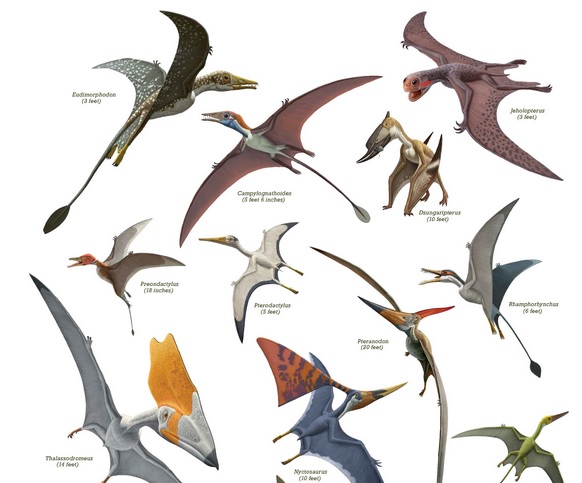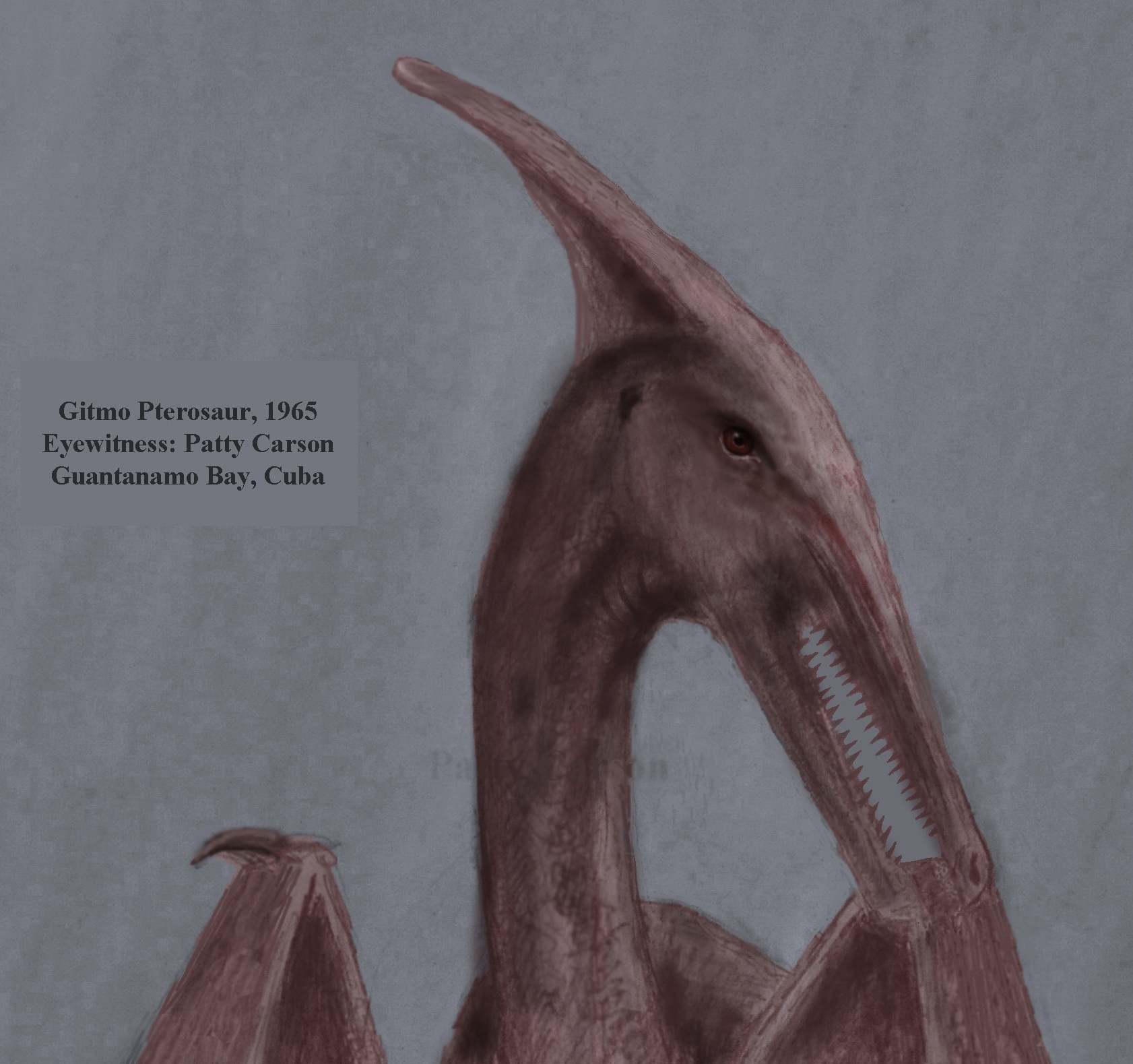By Jonathan D. Whitcomb, who is the son of the late psychologist Dr. David B. Whitcomb (of California State University at Long Beach), a pioneer in his field of educational psychology: university faculty development.
I now write about a cognitive bias, loss aversion, that appears to have had a major influence over a critic of my research. Since I am diving into a potential weakness in this man’s thinking, I do not mention his name. I also do not link to his enormous hypercritical web page: That would hurt more than help those who are searching for the truth regarding eyewitness reports of apparent living pterosaurs.
Two decades ago, a man started writing a web page criticizing the idea that not all species of pterosaurs are extinct. He often added to that page and mentioned my name many times. He expanded it so often, over the years, that the word count, as of earlier this week, was 40,676. How gigantic at 40 thousand words on that one online post! And how unique, mentioning my name (“Whitcomb”) 493 times!

From the top-right of the hypercritical web page
As far as I know, he has never attacked me personally: nothing negative about my honesty or intelligence or character in general, to the best of my knowledge. But he adamantly attacks my ideas and conclusions.
I cannot read another person’s mind, so I cannot say for sure that this critic suffers from the cognitive bias of loss aversion, but the details do strongly suggest he has fallen into this and fallen badly.
An earlier version of his online page made it clear to me: He is trying to protect old standard models of geology and paleontology. I call his huge web page KGBi with “Bi” referring to bias.
He is not a professional geologist or paleontologist, but he has taken an interest in these fields of science. He even has his own page on Wikipedia, although I suspect that he was the person who arranged to have his own page there. I suspect it because that Wikipedia page is about an obscure point in paleontology, but he is not a professional in that field. (His actual profession is listed there and it has nothing to do with paleontology or geology or even cryptozoology.)
Loss Aversion and Non-Extinct Pterodactyls
In the year-2013 version of KGBi he says, in the second paragraph, “While finding a living species of pterosaur would be a monumental discovery, it would do nothing to refute mainstream geology.” We need to take that in context: How common is the cognitive bias of loss aversion in adult humans!

Over the past two decades, I have occasionally looked through various parts of KGBi. Even though, at the bottom of the page, this web site overall is credited with having about two million hits (number of times persons have visited the site), I doubt that many readers have spent more time looking through KGBi than I have, over the past 18 years.
During those two decades, I have not found even one paragraph that gives any positive feeling or reasoning for the possibility that even one eyewitness report of an apparent modern pterosaur might be legitimate evidence that even one living animal might be descended from an ancient pterosaur. Talk about being one-sided!
Why do I feel it most likely that the author of KGBi has fallen into the cognitive bias of loss aversion? I first need to introduce you to my email communications with that man.
Even though I have advised him not to use the label young earth creationist when referring to me, he still continued to label me that way. I am not offended, for I share a number of aspects of YEC belief with many persons who take the Genesis account of Creation seriously. But not all my beliefs about origins line up with many common YEC origin beliefs, in particular regarding the age of our galaxy and the age of the universe as a whole.
Yet a bigger problem is this: Some people are too anxious to isolate somebody by applying a narrow label to the person they feel opposed to. I believe that the author of KGBi has been afraid that some people may come to believe in modern pterosaurs and then disrespect traditional ideas in geology.

Conclusion
To the best of my understanding, this hypercritic would have no problem with the discovery of a species of modern pterosaur . . . as long as that discovery was not by me or by one of my associates.
Unfortunately, he seems to have had such a fear of being shown wrong that he has spent a good portion of his life in trying to prove my long-standing research to be misled and without any validity. Part of his problem in his quest is this: He does not know everything that I have discovered in the hundreds of direct eyewitness testimony reports that I have received from early in 2004 to the present. On his enormous web page he apparently only mentions a fraction of the eyewitness accounts that I have received.
This hypercritic has fallen into a number of cognitive biases, one of the first ones probably being loss aversion. If he had not been a victim of that cognitive bias, then why during the past 17 years has he created one online post (KGBi) with hundreds of paragraphs, some of them very long? Why has he spent so much time on KGBi, which now has 40,676 words?
I see no explanation that does not include loss aversion.
.
###
.
Pterosaurs and Cognitive Biases
I don’t have a number or a range for how many “pterodactyls” live on this planet or even just in the United States. But I now believe that these flying creatures are rare, not just uncommon.
.
Are modern pterosaurs dangerous?
At any particular time and place, a particular long-tailed ropen may search for bats or jack rabbits or fish, and that choice of prey depends a lot on the experiences of that particular animal.
Yet at least a few non-extinct “pterodactyls” seem to have found it easier to catch and subdue farm animals or family pets: cats and dogs are sometimes on the menu, unfortunately for pet owners.
.
Evelyn Cheesman (1882-1969), as an educated British biologist, explored on islands in the southwest Pacific early in the 20th century. Thanks to the British cryptozoology researcher Richard Muirhead, we know about how some of Cheesman’s observations relate to reports of possible living pterosaurs in Papua New Guinea.
.
Critics of living-pterosaur investigations
The point here is that a giant pterosaur that would cause a blip on a radar screen would not cause a radar operator to telephone a newspaper to report a giant pterosaur.
.
I was asked about the possibility of religious bias in the thinking of those who believe the eyewitnesses of apparent living pterosaurs. I replied that bias is not restricted to those who are religious. Why should Christians be singled out for potential bias? Any person of any philosophy may well be biased about particular ideas.
.
Whitcomb and living pterosaurs
Whitcomb, in 2004, led the first of two important expeditions on Umboi that year. Two other Americans followed within a few weeks: David Woetzel and Garth Guessman, leading the second expedition.
.
The psychology of loss aversion
Ownership is not limited to material things—it also applies to ideas. Once we take ownership of an ideology, about politics or sports for example, we tend to value it more than it is worth. And we hate to lose an argument. However, we run the risk of dismissing others’ ideas that might simply be better than ours.
.
By Jonathan D. Whitcomb
I’ve written much about the Ptp image over a number of years. For now, consider some objections that critics have made and some of the problems with those skeptical remarks.
.


